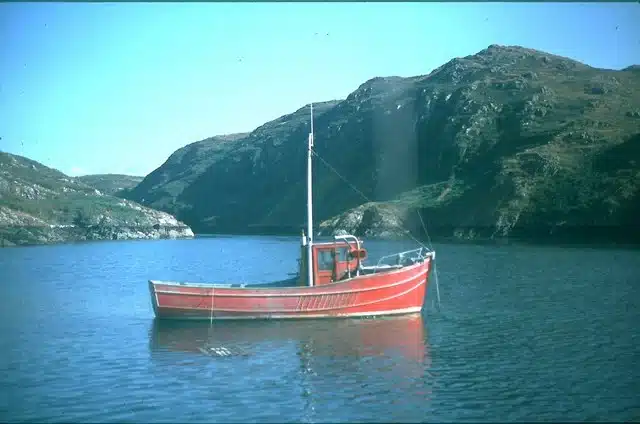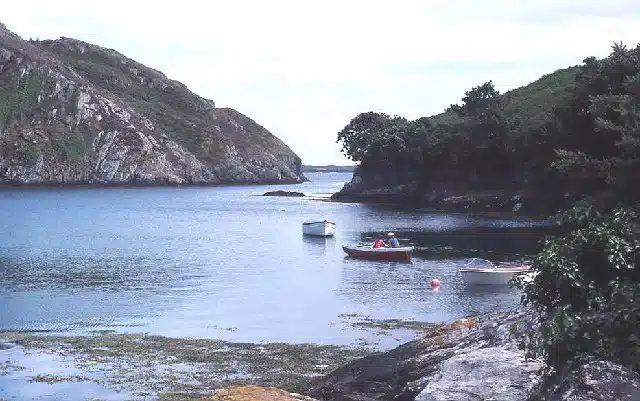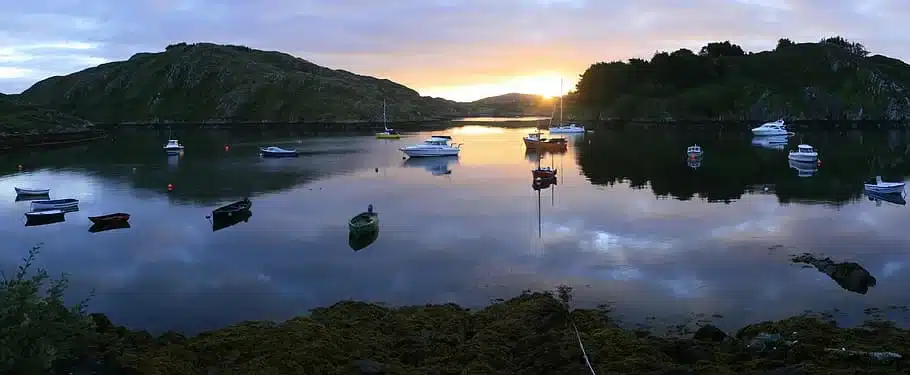Lough Hyne-Ireland’s Most Beautiful and most Studied lake

Ireland is renowned for its stunning landscapes, picturesque beaches, and coastal wonders, but hidden away in the town of Skibbereen, Co Cork, lies a gem that captivates both nature enthusiasts and history buffs alike—the enigmatic Lough Hyne. UTV’s travel series, Lesser Spotted Journeys, recently explored this unique locale, uncovering not only its rich marine life but also delving into the tumultuous history that has shaped the region.
(Discover about Ryanair Aircraft Maintenance Apprenticeship Programme 2024 in our latest blog.)
Lough Hyne, Ireland’s only saltwater lake, stands proudly on the Wild Atlantic Way, drawing attention as the country’s first Marine Nature Reserve. As presenter Joe Mahon explores the marine reserve, viewers are treated to a visual feast of striking sea life, from sea squirts, described as “our nearest relative in the sea,” to football-sized sea urchins and scallops the size of dinner plates.

The lake’s significance extends beyond its marine wonders; it holds the title of one of the most studied bodies of water globally. Since the late 1800s, professors of biology from European and American universities have flocked to Lough Hyne, making it a hotbed for scientific exploration. The lake’s connection to the sea through Barloge Creek has allowed the Atlantic to carve its mark for over 4,000 years, creating a unique ecosystem.
History of Lough Hyne and O’Driscoll clan
Intriguingly, Lough Hyne’s history intertwines with the rise and fall of the O’Driscoll clan, once among the wealthiest families in Ireland. The O’Driscolls flourished during medieval times, reaping the rewards of the seas off the southern coast, which were Europe’s richest fishing grounds. However, a series of ill-fated choices led to their downfall, leaving behind the ruins of Cloghan Castle in the heart of Lough Hyne.
The region’s misfortunes extend beyond the O’Driscolls, with the Great Famine leaving a lasting impact. Mahon recounts the devastating effects on the community, emphasizing the stark reduction in population from thousands to a mere few families. The remnants of the famine are etched into the town’s landscape—the wall of the workhouse still stands, and the Abbeystrewry graveyard bears witness to a mass burial pit where thousands found an unceremonious resting place.
Despite the haunting echoes of history, Lough Hyne today is a sanctuary for nature enthusiasts and adventure seekers. The lake’s small size, just over a mile long, contributes to its unique habitat, sustaining over 70 species of fish and a diverse array of plants. Because of its biological value, Lough Hyne was declared Ireland’s first Marine Nature Reserve in 1981, ensuring that this precious area would remain intact.

Visitors can explore the area through various activities, such as kayaking under the stars to witness mesmerizing bioluminescence or embarking on the Lough Hyne Loop trail, a one-hour walk up Knockoumah Hill offering breathtaking views of the lake and its surroundings. Castle Island, nestled in the middle of Lough Hyne, adds a touch of history, featuring the ruins of an ancient fortress.
Lough Hyne, with its blend of natural wonders and historical significance, beckons travellers to uncover its secrets. As the Lesser Spotted Journeys episode unfolds, viewers are invited to immerse themselves in the allure of Ireland’s only saltwater lake—a testament to the resilience of nature and the indomitable spirit of a region shaped by both triumphs and tribulations.
LATEST NEWS
DISCOVER MORE






